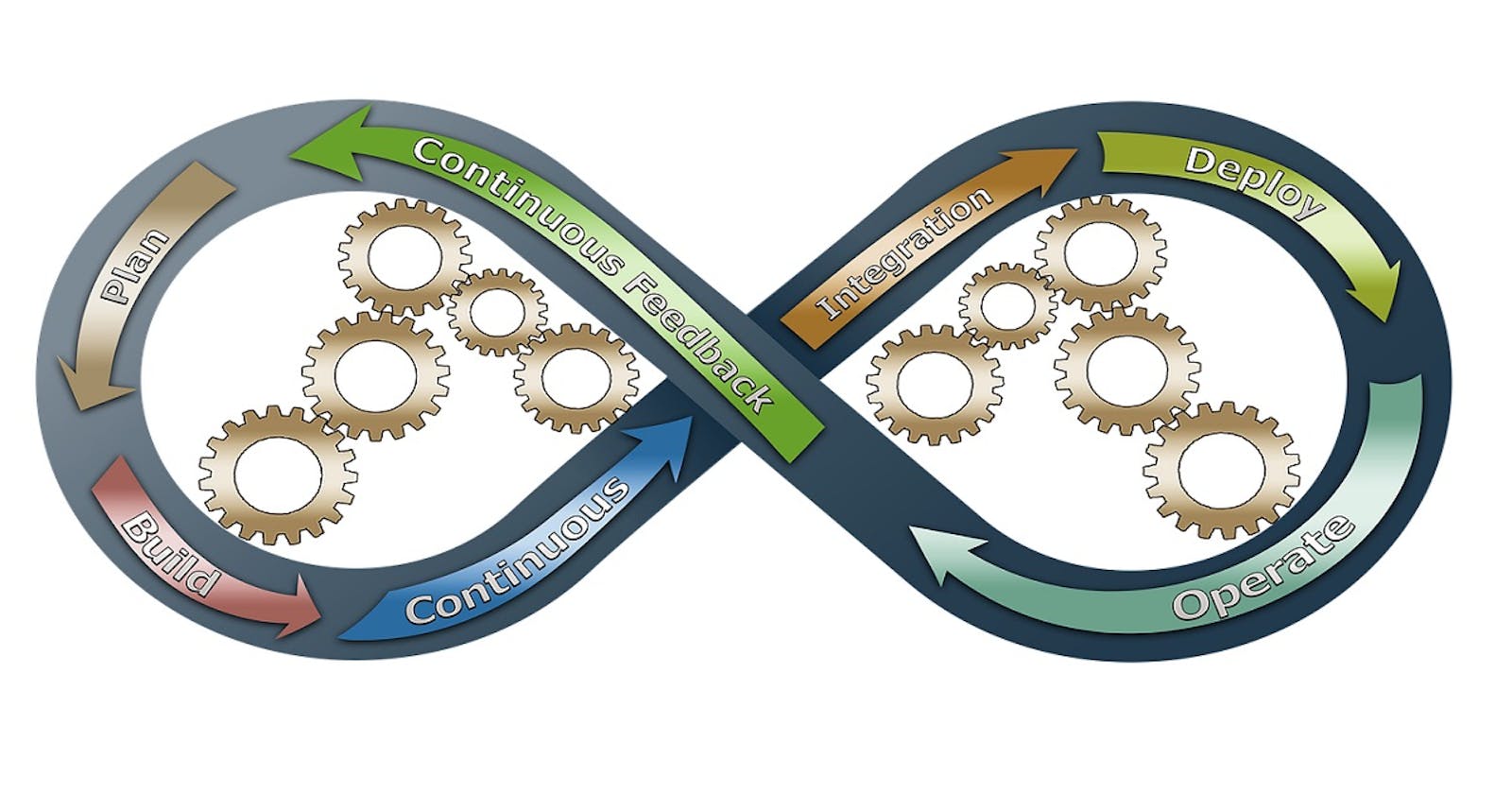If it cannot be measured, it cannot be managed. – Peter Drucker
DevOps has become the new normal today and is considered an ideal adaptation for organizations worldwide. Be it big or small, be it any industry segment, business owners are making the most out of the DevOps way of working for enhancing their business success in terms of profitability and productivity.
As easy and attractive as it sounds, it is not an equally easy task to successfully implement DevOps. To have a successful run, there must be stringent monitoring and management of all key processes with quantitative measures to prove statistics. Only then can the entire process be fruitfully monitored and implemented.
Before we move onto understanding the need for measuring the KPIs and how best to do it, let us quickly glance through the fundamental of DevOps.
What is DevOps? An Introduction
DevOps is a set of practices that combines software development (Dev) and IT operations (Ops). It aims to shorten the systems development life cycle and provide continuous delivery with high software quality. - Wikipedia
As a perfect blend of Development and Operations, DevOps is the association of processes, people, and technology for a continuous quality offering to customers. DevOps focuses on the 5 Cs – continuous planning, continuous integration, continuous testing, continuous deployment, and continuous feedback and monitoring.
The main goal of an efficient DevOps process is to lessen the software development life cycle and offer the best quality software on a regular basis.
It encompasses a set of practices, tools, and cultural philosophies that enhance businesses to offer the best of their services with maximized productivity and profitability. It helps implement applications/services more effectively than the traditional way of working and thereby elevates the business output in a big way. DevOps has been on a high trend in the IT world today and there is much to look for, in this year.
Key Features of DevOps
- Continuous and automated integration, creation, and implementation
- Alliance between teams – development, operations, and security
- Faster identification of defects and hence the smooth implementation
- Sharing code through robust technologies like API management platform
- Consistent and automated development, testing, production with proper configuration management
- Static and dynamic security testing, regular monitoring of security norms and penetration testing
Why is KPI Measurement A Vital Requirement?
A performance indicator or key performance indicator (KPI) is a type of performance measurement. KPIs evaluate the success of an organization or of a particular activity (such as projects, programs, products, and other initiatives) in which it engages. - Wikipedia
Key Performance Indicators (KPI) are vital to any project that has a critical element of successful implementation associated to it. It is a quantifiable measure that can ascertain how closely organizational goals are being achieved. Through these KPIs, business owners can very well, ensure the best operations of their technologies and ensure compliance with business goals.
There are certain strong advantages that prove that measurement of KPIs is an essential element:
- Improving of employee confidence
- Enhancing business goals and responsibility
- Nurturing personal growth
- Vital for performance management
- Measuring targets, important information, progress
- Supervising company health
- Evaluating patterns over time
When it comes to DevOps, measuring its success is a tough task. DevOps has its own peculiarity since it is not a defined framework. It is more of a culture, an adaptation by teams, and hence the key metrics that can measure the success ratio of DevOps must be thoughtfully worked upon.
Key Best Practices for DevOps KPI Measurement
Implementation of KPIs effectively in a DevOps environment includes identifying KPIs for the organization, creating dashboards to observe results, evaluating these KPIs in connection with business objectives, planning further strategies for enhancing performance, and assessing if the metrics are meeting desired expectations or not.
Here are certain key best practices that can surely help in measuring the best of KPIs for effective management of DevOps practices.
- Improved Frequency of Deployment
The rate at which deployment is done is the deployment frequency. As per new norms that the DevOps teams follow, there must be more releases and deployments with regular interaction with users. Deployments must be well planned and the rate at which they occur must be well measured through key metrics. This helps in better release strategies and testing.
A small unit of deployment frequency will offer detailed insights into the system and a better understanding of the consequences. Hence, deployment frequency metrics must showcase a regular and steady growth of deployment that basically shows a regular growth curve. This leads to better agility and adaptation to customer requirements.
- Measuring Change Volume While Deploying
Coding is one of the most important aspects for the DevOps teams while working on any type of project. The lines of code that are embedded into production with each software deployment is crucial and must be measured through the Change Volume metrics. This KPI is important for measuring the deployment success ratio while the newer lines of code are being put into production.
With each deployment, the volume of change must also be measured. An accurate impression of progress can be achieved with these metrics. And the result will be a substantial amount of updates that will give a great user experience.
- Measurement of Change Failure Rate
A change failure rate is a rate at which releases fail due to multiple reasons, during each deployment. During each deployment, if the change failure rate is high, implies problems in application performance. Even if the deployment frequency is high, the failure rate must be minimal and must be monitored as an important KPI.
If the KPI is frequently high, the reasons behind it must be analyzed and worked upon before the next deployment happens. Else, there could be revenue loss, customer dissatisfaction, and poor implementation progress.
- Quantifying Lead Time
In the case of projects that need quick implementation, measuring the lead time is crucial for effective management. This KPI counts the time involved from the initial start till the implementation. It assists DevOps teams in estimating the time that is needed from start till add and thereby manages the workflow and efficiency.
If the lead time value is low, it implies the DevOps teams are competent enough to adhere to time deadlines, showcasing high-end productivity. Measuring this KPI helps in fulfilling client requirements and come up with a short turnaround period.
- Client Feedback & Client Tickets
Though it sounds simple and common, it is one big KPI that cannot be neglected. Measuring client feedback is critical to the DevOps teams since that gives us the direct implication of our implementation schedules. Clients are supposed to be happy offering positive feedback and any negative comment or error reporting from their end is supposed to be taken seriously.
After all, keeping the customer satisfied is the direct source of better business and maximizing revenue generation. Teams must try to have as minimal customer issues/tickets as possible to ensure a smooth implementation. Measuring customer tickets is also an effective KPI which showcases that the lesser number of client tickets means a robust and stable system. A lesser number of client feedback and tickets talks about a consistent and good quality product.
- Mean Time to Detection (MTTD) and Mean Time to Recovery (MTTR)
Detecting errors and recovering from them in a timely and planned manner is important for DevOps teams to function efficiently. The two key metrics that do the job are Mean Time to Detection and Mean Time to Recovery. The first one helps in finding out if the teams are efficient enough to detect errors/issues in the stipulated time or not. The second one helps in observing if the teams can solve the errors in time or not.
Both these metrics mean a lot to the project, without which there are chances of erratic project management or system malfunctioning, or implementation hassles. MTTD measures the average detection time for issues and MTTR measures the average recovery time from errors, both of which help in getting queries resolved.
- Calculating Defect Escape Rate and Error Rate
However much teams may try; defects are bound to occur. The wise action is to catch those defects well in advance so that they do not hamper the production process. The sooner teams catch defects, the better it is for the stability of the project. The important metrics called Defect Escape Rate is apt for assessing the number of errors that occur prior to production and those that occur during implementation.
Ideally, the rate at which defects are captured should be high during the testing phase internally as compared to that while implementation. That ensures that almost all defects are caught prior to reaching the client. Even error rate must be calculated – the frequency of error/bug/production issue occurrence.
- Application Traffic, Usage and Performance Monitoring
Once the application is rolled out, observing its parameters is most important. How is the application catching up on traffic, how is the usage and how is the performance must be monitored well? These parameters can be monitored via respective KPIs that are meant specifically to check on application related activities.
Owing to certain reasons, there are chances that the application may show different results in terms of usage, traffic, and performance. Measuring these KPIs then will give detailed insight into why this is happening and how best can it be solved.
- Tracking Time and Size of Deployment
DevOps teams can garner better results if the size and time of deployments is measured regularly. Deployment time is the time that is taken for actual deployment to happen. Deployment size is the number of features, bug fixes, and modules that are being deployed in 1 unit. Tracking these components regularly can help in identifying possible issues at an early stage and thereby, implement a robust solution at the actual time.
As We Wrap Up
DevOps has a great future and the measurement of KPIs is sure to be a catalyst to the success of its implementation. These best practices, as mentioned above, are a sure shot help to ascertain if the policies and approach being followed for implementing DevOps in your organization is accurate or not.
The year shall see a high-end implementation of DevOps all over and in parallel, the implementation of key performance indicators to ensure correct and effective usage of DevOps practices.


